The first time I saw g large-scale exhibition that set Canadian artists side by side with international artists on Canadian soil, I played a game where I would intuit whether the work was made in Canada, and I scored nine times out of ten. I noticed that the works by Canadians were about something: a historic event, national identity, Expo 67, a document that altered the agency of a group of marginalized people. It felt didactic, like it was trying to teach a history lesson, to moralize its audience.
Then, in my head, I’d draft the grant proposal that I imagined the artist wrote to fund the production of work. I imagined what buzzwords they would’ve used to appeal to a jury of their peers. “Social practice”? “Archival research”? I began to wonder how the non-market oriented financing of contemporary Canadian art operated, when it’s become customary to see “reviews” in mainstream newspapers that address their readers like, “can you believe your tax dollars are paying for this?!” In an art world unbeholden to market forces, what’s the correlation between the jurors of funding councils and awards to who they render visible and the image of Canadian that presents to the rest of the world?
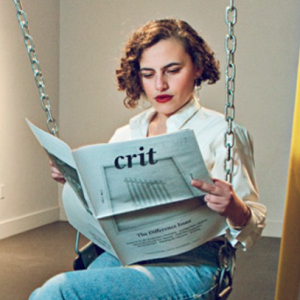
Merray Gerges/Photo: Lenny Mullins
So when I began this residency in October 2015, I was propelled to participate in what I anticipated would be a critical conversation around the time that Canadian art journalism ought to have been preoccupied with the two art fairs in Toronto (Art Toronto and Feature Art Fair), the two major national awards (the Sobey and the RBC painting award), and the cultural platforms put forth by contenders in the historic federal election that promised to end the decade-long reign of a conservative government that saw the consistent undermining of public arts funding.
But beyond a scattering of news stories, listicles, and promo- reviews, Canadian art journalism/criticism wasn’t as preoccupied as I’d anticipated. When I searched “Canadian art market,” multiple engines yielded virtually nothing beyond diluted collector Q&As and “investor’s guides,” just like US art news outlets had only handfuls of search results with “grant” in them. I could only find two writers who delved into beyond mere coverage.
Sky Goodden, the founding editor of Momus, an online art criticism publication with the tagline “A Return to Art Criticism,” asks questions that are pertinent to this upon her publication’s announcement of a media partnership with Feature Art Fair. She recalls the hesitation of a potential contributor who thought that the partnership was contradictory to the publication’s ethos, even though she says that “one of the critic’s most important roles is to keep the market in check.” This conversation compels Goodden to ask herself:
How does the critic’s responsibility shift when the market she’s critiquing is newly established—or even fledgling? Should she offer abiding support, in the way of “wishing makes it so”? Or should her criticism yield directions and cautionary tales to help steer her market clear of others’ failings?
As a critic working in Canada, these are the secondary concerns that accompany the ones established by our international cohort. It’s a different reality here, our artworld seemingly motivated by everything but art-market concerns and collusions. The veritable absence of a market might sound ideal to those working outside it—“all those grants!,” they exclaim— but for those working within our sphere, it’s a source of deep anxiety. The absence of a strong art market is as disconcerting as the overbearing nature of one elsewhere. We keen for both the ballast and forward motion that a healthy art economy can supply. (And what “healthy” looks like is up for debate.)
Julie Hollenbach, a PhD candidate at Queen’s University art history, presented another rare instance of this discussion at the fall 2015 Universities of Art Association of Canada’s annual conference. Though she endeavored to research “the impact of private sector funding and sponsorship on Canadian Contemporary Art,” her investigations, much like mine, were fruitless: “I admit that I was naive. I contacted banks, businesses, real estate developers, and oil companies—expecting them to respond to my emails and phone calls! To take me up on my request to tour archives and collections,” writes Hollenbach in the unpublished essay she discussed at the conference. She assumed, that “like public institutions, they might have a mandate to be accessible to the public, to support dissemination of information, and to encourage knowledge creation.” Instead, she found her emails were left unanswered while her phone calls were “directed around in circles.” So she diligently combed through annual reports and public records herself, in hopes of discovering any disclosure of money spent funding Canadian art.
“It turns out that while these corporate entities spend a lot of money publicizing the ways in which they support cultural initiatives—through art exhibitions, high profile events, art-after- dark festivals, and art competitions and prizes—there is a profound lack of transparency regarding how much money is expended, and what the terms of the support are,” Hollenbach explains. “It is hard to factor in the impact of these corporate sponsors on current public discourses of art and lasting narratives, and to understand how significant this impact is, when information about their arts expenditures are so elusive.”
Nonetheless, I waded into and through the questions I set out with. I devised a list of contacts, from cultural workers I had rapports with to others I’d only made small talk with at openings over the five years I lived in Halifax as an art history/journalism student. I selected them based on their interdisciplinary career trajectories: mid-career artists who had supported themselves through administrative work over the decades; administrators with any combination of “curator,” “university gallery director,” “art fair director,” “collector,” “jurist,” “artist-run centre coordinator” on their pages-long CVs; Canadians trying to “make it” in the US because they saw that as the only path to beyond-national recognition. In my initial correspondence, I was 100% transparent about my objectives:
Dear ____,
I hope this email finds you well! I just began the critical art writing residency via AGNS/Visual Arts News and my project is an inquiry into the financial factors that inform Canadian art aesthetics. I’m considering how artists’ survival mechanisms influence their output: whether they fund their work through grants or if they are market- driven (or both), and what that looks like in a country with a market that barely shows vital signs (in contrast to the US) and with Canada Council’s impending new funding model.
Benign, right? That’s what I thought. Though I’m not an outsider—my criticism practice synthesizes the art-speak know- how that you get from studying art history at an art school with the impulse to debunk it that’s drilled into you in journalism school—“I can’t trust you. You’re a journalist” was the first of an onslaught of PR-friendly lip service from professors and administrators and curators afraid to jeopardize their positions of power, and artists and writers who were afraid they might never get any.
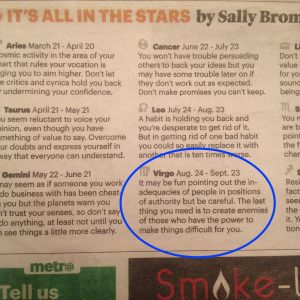
The author’s horoscope during this inquiry.
In the handful of instances that I did manage to eke out anything beyond that, the responses were sandwiched with hesitant disclaimers that the classified information they were confiding was “off the record”—a commonly misused statement abused by the press-paranoid, one with no legal meaning—“this stays between you and me,” “is your recorder still running?” “don’t write that in your notepad.” So unceasing was this reticence that I was prompted to revisit the Canadian Association of Journalists’ code of ethics to ensure that I wasn’t out of line. It led me to offer subjects “no attribution”—so that I may paraphrase or quote them without disclosing their name or their exact title—though that might undermine my credibility. You’ll have to take it on faith that I’ve done my part relaying oral histories and anecdotes supposedly too contentious to be attributed.
“Canada just doesn’t get it,” says the only Canadian who seemingly doesn’t abide by what I could only attribute to the stereotype of the “Polite Canadian,” too bashful to talk money.
At the first draft writing, his work was on view in a private collection whose business magnate-art collecting-philanthropist owners are at the helm of hedge fund advisory houses, holding companies that possess 40% of downtown Las Vegas real estate, and an ice-hockey team, among other things.
I’m warned that I might get trolled by any of his 70k followers if I disclose the name of this artist who is 10 years my senior, who unabashedly bashes other Canadian artists’ work without watching his own back—not because he has nothing to lose (he’s more accomplished & internationally recognized than the rest of them, remember?) but precisely because he’s more accomplished and internationally recognized—who has a reputation for engaging in two-way pursuits of women my age who are “trying to find their place in the art world.”
Though he offers to serve as my “insider insight” at the gala I met him at, by the time I tried to add him on Facebook “This person [had] reached the friend request limit, but you are now following them.” My attempts at following up thereafter were thwarted.
When I complain to her about these hassles, Dr. Carla Taunton, Assistant Professor in the Art History & Critical Studies Division of NSCAD, offers me quasi-consolation: in a country with a scattered and insular (singular?) art scene that pours a lot of labour into peer review (whether academically or financially), “our criticality has to be careful. Our negative feedback is private and one-on-one, so we can ensure buy-in from our funders when we ask our province for money.”
The risks run deeper still for me as an emerging critic with no clout: though I have nothing to lose, I’m poised to bite the hand that feeds me right now at the provincial gallery in which I am the only person of colour who isn’t security, or the hand that might feed when I apply for a grant down the line if I’ve dared critique the work of a jurist. Conversely, it might just be my status as a novice that poses a greater risk to those I interview: relative to them, I might not yet know my limits within the parameters of art-world decorum.
Tenured educators, curators and administrators who have made the East Coast home claim that the region has embraced its geographic remoteness, touting its isolation as an incentive for artists to make work in an environment that is relatively more affordable, less cutthroat, and less competitive for attention than, say, Toronto. Though I want to find out who is selling work in Atlantic Canada and who’s buying it, Contemporary Art Galleries Association (AGAC) has no members east of Montreal. When self-imposed, the isolation is at first romanticized, then decried when it backfires and used against us when we lament that even though the Sobey Art Award was devised here, there has never been an Atlantic winner since the award’s establishment at the Art Gallery of Nova Scotia in 2001.
About six weeks in, I grow wary of this unceasing reticence. I reframe my questions to make my prerogative ambivalent. I start to connect the dots: though we call for rigorous criticism in the countless symposia and panels that posit then repeal the “crisis in Canadian criticism” ad nauseam, and supporting young critics is an initiative that sounds good on paper and warrants receiving grants and devising mentorship programs, Canadian politeness is not a myth. What I’m attempting to dissect here isn’t so much an art world that isn’t willing to be transparent (information flows wherever alcohol flows, and in the presence of a journalist in public spaces, all information is legally fair game) or self-reflexive (it’s almost often self-reflexive to a fault, even, with re-jigs of the same tired curatorial concepts examining our identity, etc), but an art world that is too afraid to go on the record, too afraid to slight its proponents. When it bemoans the scarcity of criticism, it’s really just lamenting that there’s not enough press or publicity.
At this writing, this is still an inconclusive inquiry.

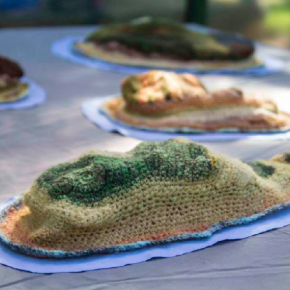
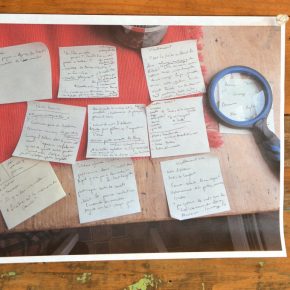









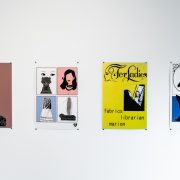
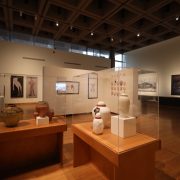


I’m glad that you’re asking questions, but there have been some answers proposed over the years. You might check out an article in Fuse from many years ago by Kristof Wodizcko. Canada would be much better off if anyone would probe the neuroses of the grant system. Personally my Canadian career has suffered for the effort. That fact alone speaks volumes about the inadequacy of the Canadian art world.
Jeff Koons was nearly bankrupt when Eli Broad supported the fabricating costs of his sculptural work. Damien Hirst’s career (and all the YBAs) came about because of Charles Saatchi’s early funding and patronage, (etc.) It would be great if Canadian entrepreneurs (and/or collectors) also privately funded ambitious art projects. Money is speed, and grants are slow (and never enough for ‘the big idea’.) http://www.nu4ya.com